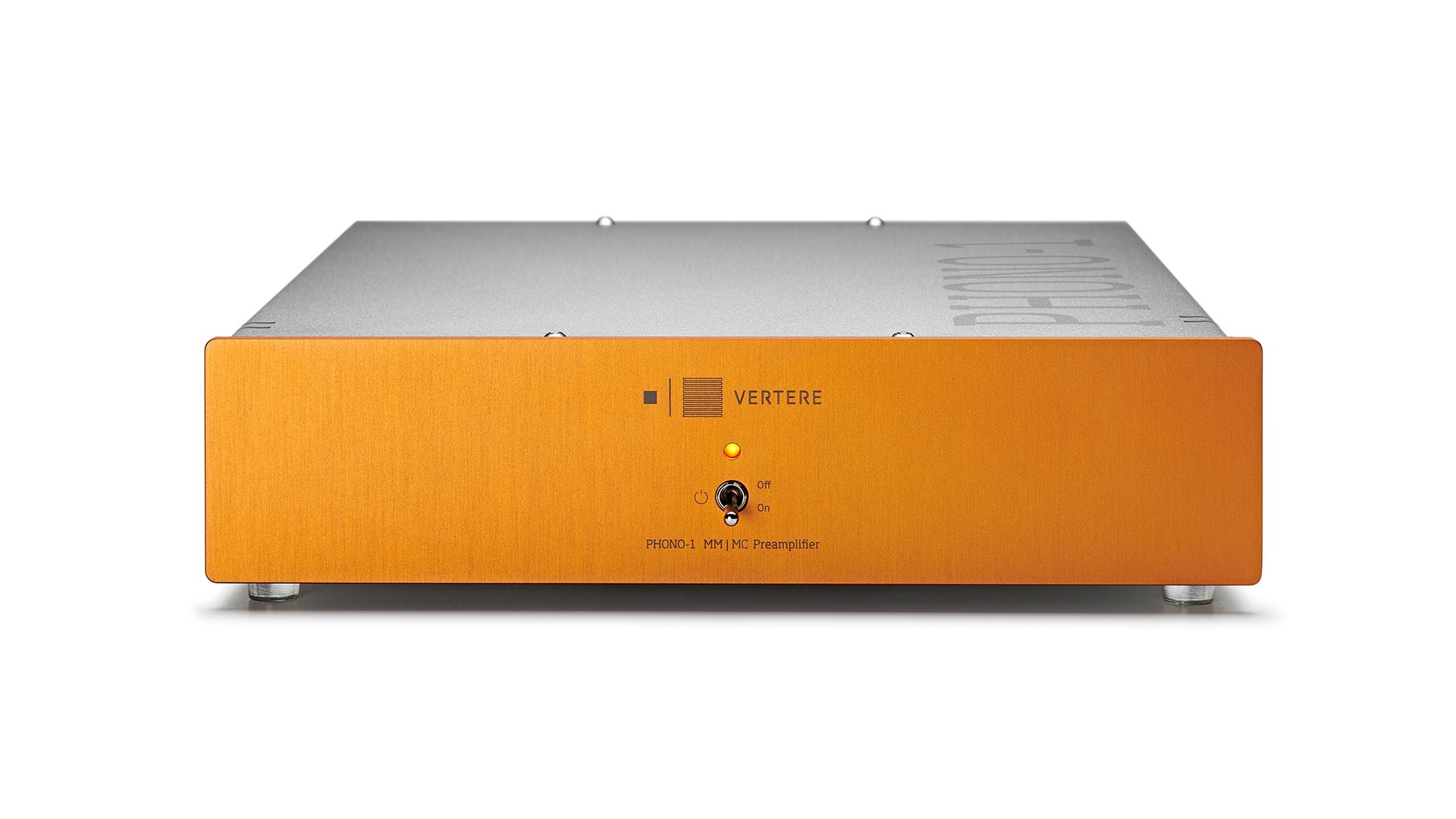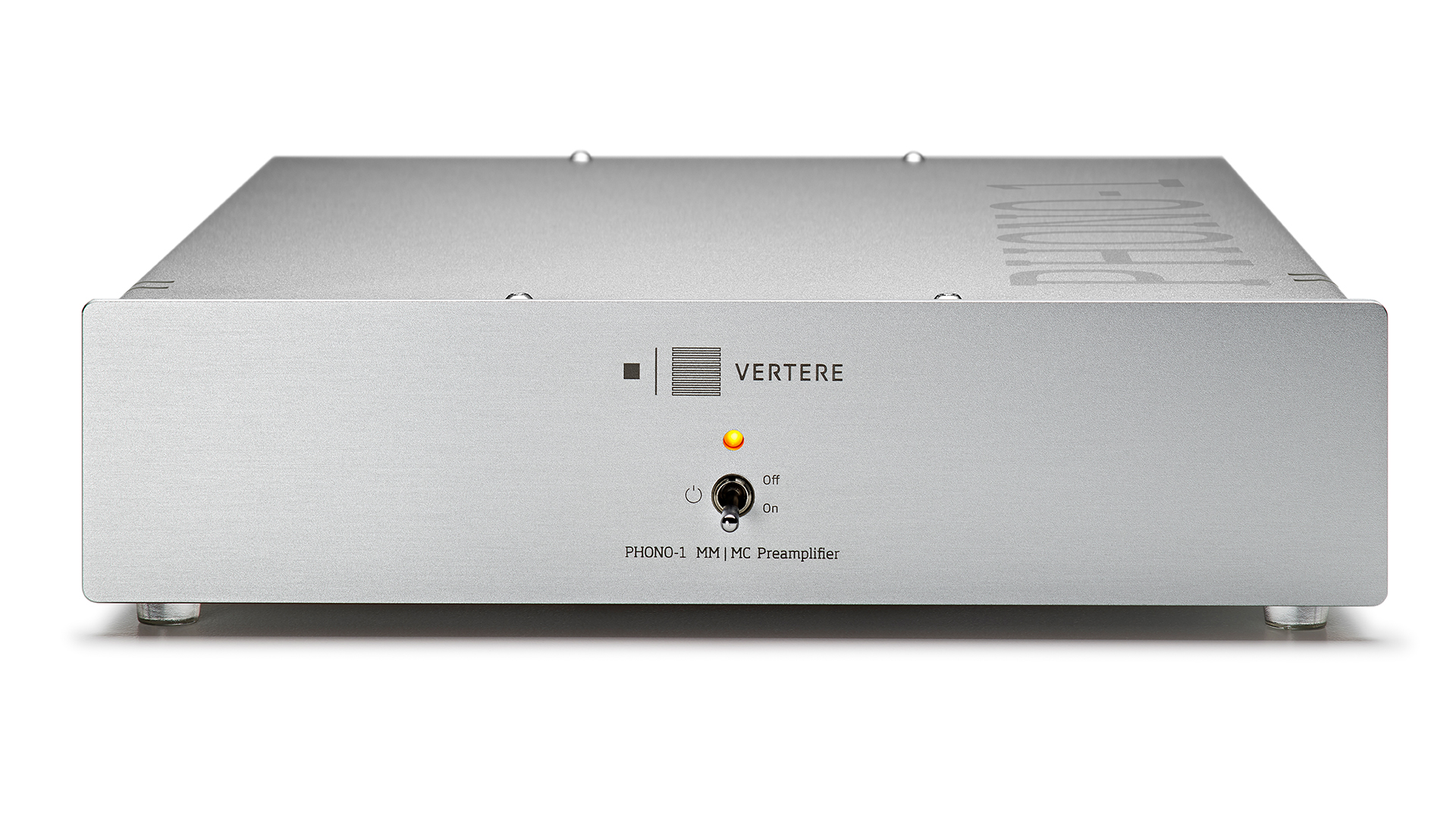What Hi-Fi? Verdict
Careful evolution has made an already excellent phono stage even better
Pros
- +
Improved clarity
- +
Impressive dynamic expression and rhythmic drive
- +
Excellent detail resolution
- +
Good range of adjustability
Cons
- -
Price rise over original
Why you can trust What Hi-Fi?
Vertere's first and so far only phono stage, the Phono-1, has turned out to be a stonking product. We reviewed the MkII version in 2019 and since then it has garnered five-star reviews and awards galore. There hasn’t been some massive design or philosophy change with the MkII L version. It’s a case of carefully honing an already capable product to make it even better.
Build

Surprisingly, there aren’t any upgraded components or significant changes to the circuit design. What Vertere has done is more akin to housekeeping, where the physical position of numerous circuit components has been revised to reduce unwanted interactions, and the signal path refined to reduce distortions. The unit’s linear power supply has also been moved to the main circuit board, allowing improvements in the placement of the connecting tracks and ground plane optimisation. In addition, the signal tracks are now of equal length and care is taken to lower impedances and optimise track widths to improve current flow.

Type Phono stage
Moving magnet Yes
Moving coil Yes
Gain 40.2 - 60.8dB gain
Cartridge loading adjustment Yes
Size (hwd) 55 x 210 x 235mm
Externally, little has changed from the 2021 award-winner, the Phono-1 MkII, bar the use of an orange power LED to indicate that the unit is working. The lack of external change isn’t necessarily a bad thing given the quality of the original design. This has alway been a nicely made but basic looking box.
There’s the usual single-ended stereo input and output RCAs and a choice of three grounding options, which are really handy in more hum-prone systems. Compared to the earliest Phono-1s, the cartridge loading adjustments on the base are better labelled and easier to follow. There are numerous dip switches that when used in combination allow a wide range of gain adjustments from 40.2 to 62.8dB. Resistance and capacitance loading is also adjustable and means that the Vertere should be able to cope with pretty much any cartridge out there, bar possibly some extremely low output oddities.
In line with most products in recent times there has been quite a large price hike for this new version, which costs around a third more than the original did on introduction. That’s just a reflection of the way the world is at the moment, unfortunately.
Sound

A phono stage at this level demands a suitably talented system. We use our reference Technics SL-1000R record player with a number of different cartridges, including Kiseki’s Purpleheart moving coil and two moving magnets in the form of Vertere’s very own Sabre and the Goldring 2500. The rest of the set-up is Burmester’s 088/911 Mk3 amplifier and the ATC SCM50 speakers.
We’re pleased to report that all of Vertere’s work hasn’t changed the Phono-1’s character much, and that’s a good thing given that up to now it’s been the most entertaining phono stage we’ve heard at this level. The MkII L is clearly better than the last generation though, delivering notably more in the way of dynamic expression together with improved clarity and insight. Levels of hiss and hum are unobtrusive, too.
The latest hi-fi, home cinema and tech news, reviews, buying advice and deals, direct to your inbox.
We listen to Paul Simon’s Graceland and love the way this new Phono-1 MkII L sounds even more lively and energetic than before. You Can Call Me Al comes through with its infectious energy intact, the phono stage managing to dig up layers of fine, textural detail and arrange it in a cohesive and musical manner. Simon’s distinctive sweet delivery is crisp and easier to follow; his voice packed with nuance and charm. The overall result is cleaner and more precisely drawn than the older version of the Phono-1 managed.
Tonally, things are balanced with no part of the frequency range gaining undue emphasis, and the top-end is impressively crisp without obviously lacking refinement. You can add a pleasingly precise soundstage to the list of plus points and the ability to remain composed when the music becomes demanding, as it does when we listen to Orff’s Carmina Burana.
We love the scale of this piece of music and the way the Vertere delivers the seismic dynamic shifts of the recording with so much enthusiasm. As with the previous version, our takeaway after hearing this product is that it makes listening to music interesting and, where appropriate, fun. There’s not much we can ask of any piece of hi-fi beyond that.

Verdict
If you’ve got an earlier version of the Phono-1 don’t worry about swapping it out for this new one. Yes, the MkII L is clearly a step ahead, but the older generation remains an excellent unit. For new buyers, don’t hesitate to go for this version. Given a source and system of appropriate talent, it shines.
Review published: 2022. Review updated: November 2024.
SCORES
- Sound 5
- Build 4
- Features 5
MORE:
Read our review of the Cyrus Phono Signature
Also consider the Musical Fidelity MX-VYNL
Best phono preamps: budget to high-end phono stages
What Hi-Fi?, founded in 1976, is the world's leading independent guide to buying and owning hi-fi and home entertainment products. Our comprehensive tests help you buy the very best for your money, with our advice sections giving you step-by-step information on how to get even more from your music and movies. Everything is tested by our dedicated team of in-house reviewers in our custom-built test rooms in London, Reading and Bath. Our coveted five-star rating and Awards are recognised all over the world as the ultimate seal of approval, so you can buy with absolute confidence.
You must confirm your public display name before commenting
Please logout and then login again, you will then be prompted to enter your display name.



